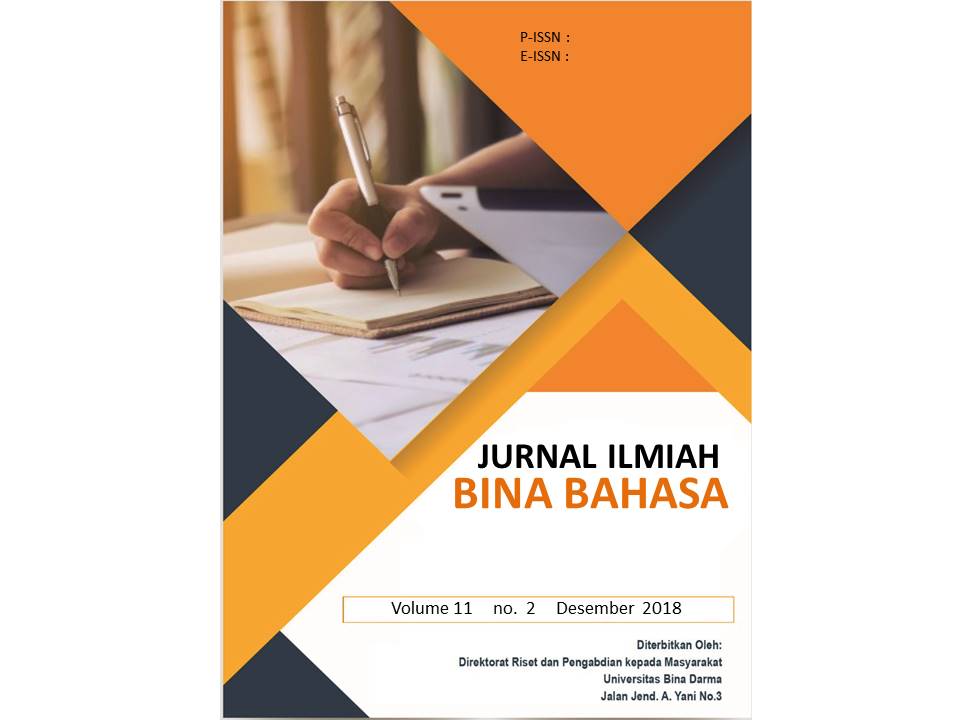PLEONASM IN THE TV SERIES THE WALKING DEAD
Keywords:
The Walking Dead, Types of Pleonasm, Sub-types of pleonasms, Functions of PleonasmsAbstract
This study aimed at finding and identifying the types and functions of pleonasms occurred in the TV series The Walking Dead. The object of this study was the 10 episodes of The Walking Dead from season 7. This is a qualitative descriptive research, since it involves the utterances of characters in the film that need to be summarized and described. The data were collected using the documentation technique. Some steps were taken in the process of collecting and analyzing the data, such as extracting the subtitles, watching the series, converting, printing and reading the subtitles, finding and marking the pleonastic expressions, and identifying the types, the sub-types, and the functions of pleonasms. 165 pleonastic expressions were found in the series. Out of 165.89 (54%) is syntactic pleonasms, and 76 (46%) is semantic pleonasms. A total of 97 (59%) pleonastic expressions function were highly to emphasize or intensify the expressions, which holds the majority.
References
Lambert, V. A., & Lambert, C. E. (2012). Qualitative Descriptive Research: An Acceptable Design. Pacific Rim International Journal Nursing Research, 255-256.
Lehmann, C. (2005). Pleonasm and hypercharacterization. In Yearbook of Morphology 2005 (pp. 119-154). Heidelberg: Springer.
Muhammed, S. E., & Meftin, J. A. (2016). A Study of 'Pleonasm' with Reference to some Biblical Verses. Journal of Al- Qadisiya University, 19.
Nida, E.A., & Taber, C.R. (2003). The Theory and Practice of Translation. Leiden: Koniklijke Brill NV.
Peng, F. C. C. (2005). Language in the Brain: Critical Assessments. London: Continuum International Publishing.
Plett, H. F. (2006). Pleonasm. In Encyclopedia of Rhetoric. England: Oxford University. Press.
Russell, J., & Cohn, R. (2012). Pleonasm. Edinburgh, Scotland: LENNEX Corp.
Whatley, R. (2010). Elements of Rhetoric: Comprising an Analysis of the Laws of the Moral Evidence and of Persuasion, Illinois: Southern Illinois University Press.
Wit, E., & Gillette, M. (1999). What is Linguistic Redundancy? (Tech.). Chicago: University of Chicago.
Peng, F. C. C. (2005). Language in the Brain: Critical Assessments. London: Continuum International Publishing.
Plett, H. F. (2006). Pleonasm. In Encyclopedia of Rhetoric. England: Oxford University. Press.
Russell, J., & Cohn, R. (2012). Pleonasm. Edinburgh, Scotland: LENNEX Corp.
Whatley, R. (2010). Elements of Rhetoric: Comprising an Analysis of the Laws of the Moral Evidence and of Persuasion, Illinois: Southern Illinois University Press.
Wit, E., & Gillette, M. (1999). What is Linguistic Redundancy? (Tech.). Chicago: University of Chicago

Downloads
Published
Issue
Section
License

Jurnal Ilmiah Bina Bahasa by http://journal.binadarma.ac.id/index.php/binabahasa is licensed under a Creative Commons Attribution-ShareAlike 4.0 International License.




